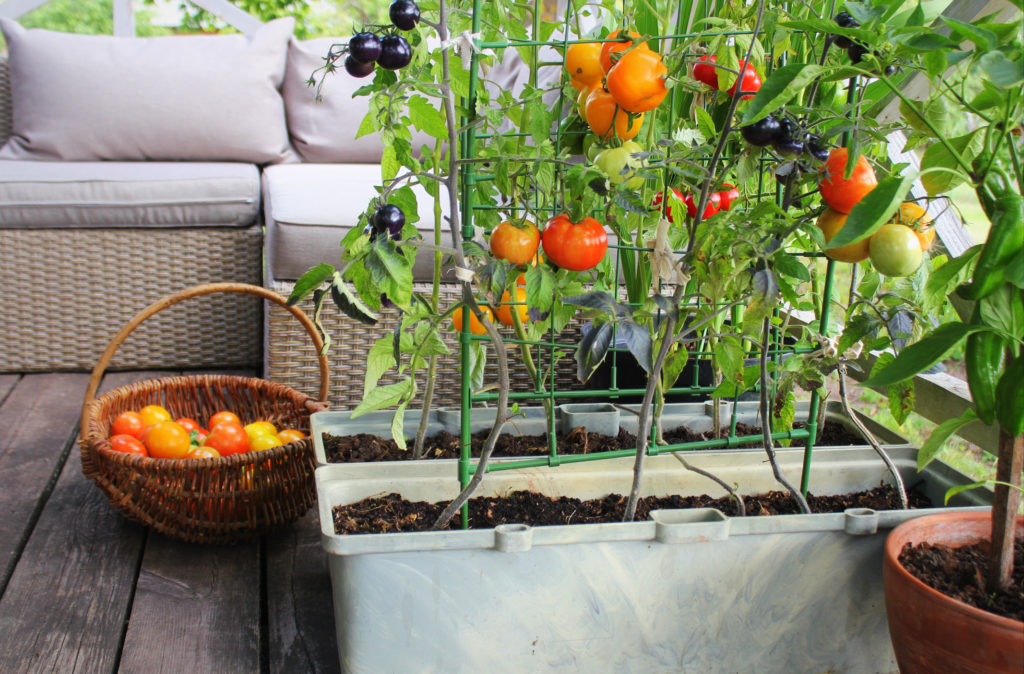
Benefits of Container Gardening
Container gardening is a great way to enjoy fresh produce during the entire year. If you lack the space for a full-sized garden, you may feel like your options are limited. However, with a little gardening know-how and careful attention, many vegetable and herb crops can be grown in a container and harvested right to your plate.
Benefits include:
- Easier accessibility
- Requires less space
- Almost no weeding
- Easily move plants as needed
- Less risk of soil-borne disease
- No heavy garden tools/equipment
- More control over moisture, light, and temperature
Plants for Container Gardening
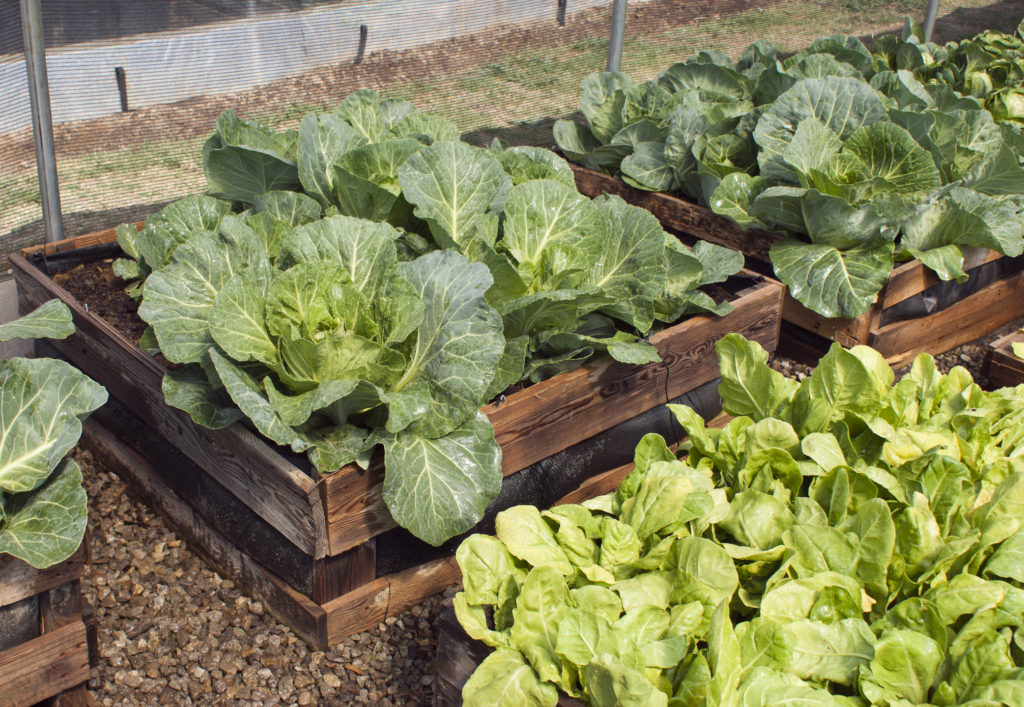
The first element to consider with container vegetable gardening is what kinds of vegetables you would like to harvest. Some types are naturally better suited for container production. For beginners, some good vegetable container gardening varieties are beets, carrots, lettuce, radishes, peppers, and tomatoes, but some other items like beans, broccoli, squash, and more can also be successful if the specific variety is chosen thoughtfully.
More compact plant types are naturally more adaptable to containers. However, even those that require support can be trellised or caged and produce a beautiful bounty, like container gardening tomatoes.
Best Container Plant Companions
- Beans, Carrots, and Squash
- Jung Favorites: Top Crop Beans, Adelaide Hybrid Carrots, and Sunburst Hybrid Squash
- Eggplant and Beans
- Jung Favorites: Epic Hybrid Eggplant and Provider Beans
- Tomatoes, Basil, and Onions
- Jung Favorites: 42 Days Tomatoes, Everleaf™ Emerald Towers Basil, and Guardsman Onions
- Lettuce and Herbs
- Jung Favorites: Sweet Repeat Lettuce, Chives, and Dukat Dill
- Spinach, Chard, and Onions
- Jung Favorites: Space Hybrid Spinach, Lucullus Swiss Chard, and Warrior Bunching Onions
Plant Combinations To Avoid
When choosing the plants to grow, remember not all plants grow well together. Our Companion Planting Guide will help you learn which plants benefit from being planted together and which to avoid.
- Beans, Onions, and Garlic
- Carrots with Dill or Fennel
- Tomatoes or Squash with Potatoes
- Onions with Beans or Peas
What Container Should I Use For My Container Garden?
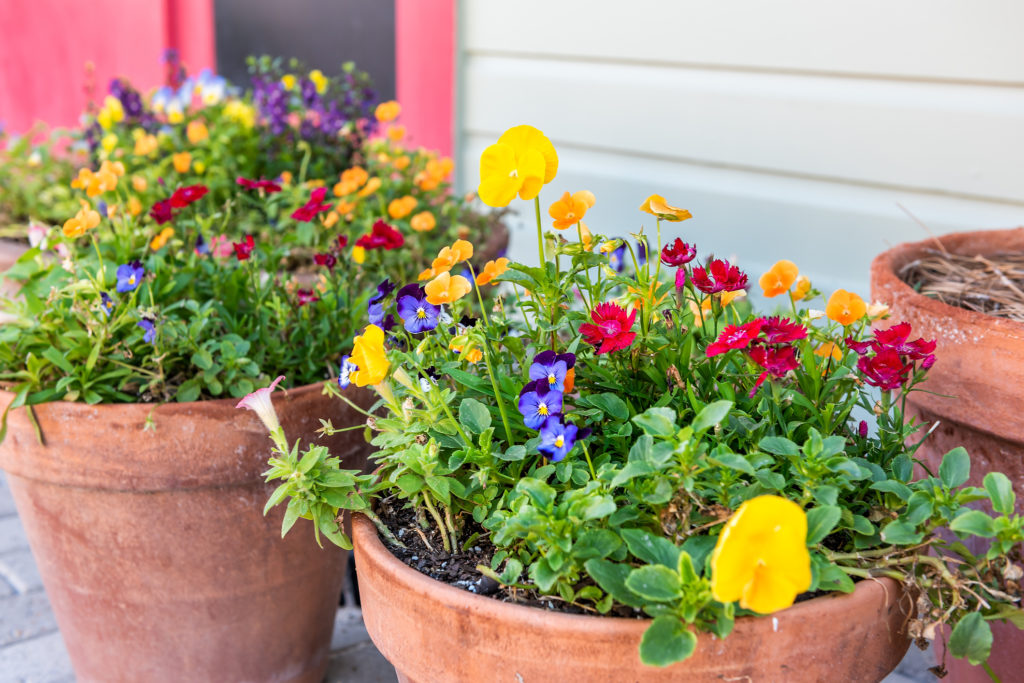
Nearly any vessel can be used for container gardening if it provides excellent drainage and is large enough to house the plant or multiple plants you choose. Overwatering is a frequent problem in container gardening and is usually the result of inadequate drainage. Waterlogged soil prevents the roots from taking up needed oxygen and required nutrients resulting in poor growth reduced production and even death.
A general rule of thumb is one or two drainage holes for pots 12” and under, and four or more drainage holes for containers over 12”. Be sure the drainage holes are evenly spaced and set containers up on a block to prevent clogging. Use a paper coffee filter to cover drainage holes. Water will drain out but not the soil.
When considering the size of a container, bigger is better. Think about the items to be grown, anticipate, and research the mature size of the plant, and then plan accordingly. If growing root crops such as potatoes, carrots, and onions, the depth of the pot along with volume should be considered.
If you wish to grow multiple varieties in one container, a ½ wine or repurposed whiskey barrel makes an excellent choice to create a bountiful veggie garden. Or galvanized stock tanks also work well. Just remember to drill appropriate drainage holes in the bottom and if it is to be placed on a solid surface like a deck or patio, it’s helpful to screw on some heavy-duty, stable casters before you fill it with soil. Larger containers, like these, will become extremely heavy when filled with soil, so the casters will allow you to move your container garden around more effortlessly.
Best Potting Mix For Container Gardening
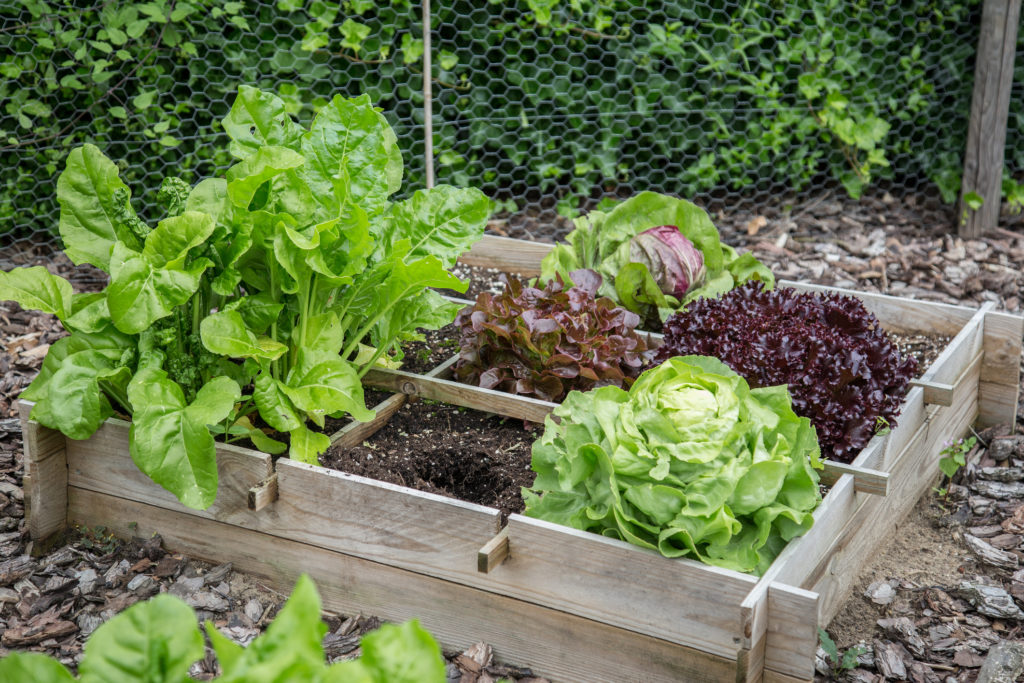
Much of the success of your container garden will depend on the growing medium chosen. Since the plants grown in containers have limited access to water and nutrients, the medium chosen must furnish the plant with all it needs.
When selecting your growing medium consider the following four characteristics:
- Does the soil hold moisture and nutrients well?
- Does the soil provide adequate drainage and aeration?
- Is the soil free of weeds and pests?
- Is the soil lightweight?
Potting soil for container gardening can be purchased already mixed and bagged and is ideal if you are only planting a few containers. However, if you plan to plant extensively, mixing your own blend is more economical. Pre-mixed growing medium and individual components can be found at Jung Garden Centers.
Using garden or topsoil is NOT recommended for container gardening. In most cases, garden soil will become too compact and dense in containers, impeding the plant’s growth. It also has a greater potential of being contaminated with weed seeds, disease, and pests.
Caring For Your Container Garden
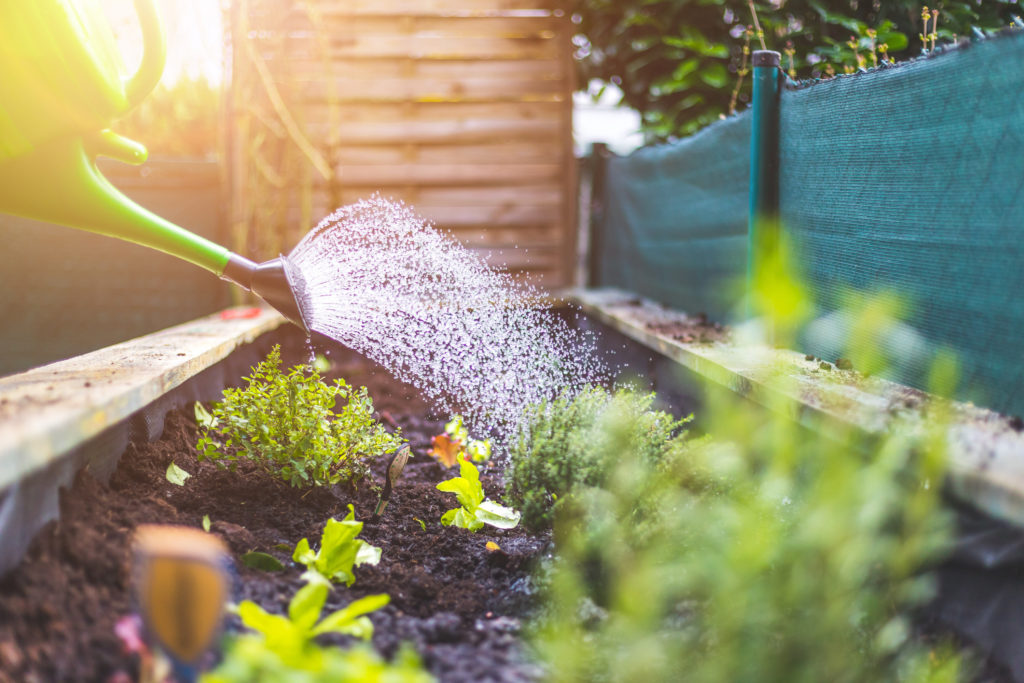
To have a successful container garden, proper watering and fertilizing are essential. When plants are grown in a traditional garden, they have natural access to water and nutrients, however, when grown in a pot, those requirements need to be provided by you.
Watering
Whether you overwater or underwater, the result is the same, poor plant health and production. The frequency at which you water will depend heavily on the type of container used. A porous container will require more frequent watering due to its ability to lose moisture through its walls. For example, glazed pots typically retain more moisture than terra-cotta pots will. Other factors such as container size, growing medium, and environmental factors will also greatly impact the frequency at which you water. We recommend watering when the plants require it, but not allowing the soil to completely dry out. Rather than applying small amounts of water daily give the plant a thorough soak. Excessive water will drain, carrying with it any built-up salts in the soil.
Fertilizing
Just as with a traditional garden the type, amount, and frequency at which you fertilize will vary from crop to crop. As a rule of thumb, the more you water the more you will want to fertilize due to leaching. If you are watering daily, use 1/3 of the recommended strength. There are numerous options available, and the fertilizer chosen will depend heavily on personal preference and common sense. Many pre-mixed soils typically have a slow-release fertilizer included, however, they will not usually sustain vegetable plants over a long growing season. Additional fertilizer should be added a few weeks after planting. Generally, leafy vegetables benefit from a balanced fertilizer (all three numbers equal) like ALGOPlus 6-6-6 All-Purpose plant food, while flowering and fruiting varieties are best fertilized with formulas higher in phosphorus (the middle number), like ALGOPlus 4-6-8 Tomato Food. Using these fine, water-soluble type fertilizers will keep your plants healthy and producing.

Container gardening is simple and enjoyable. One of the best parts of DIY container gardening is getting to create something unique and beautiful. The variety of container gardens is virtually limitless: herb garden containers, floral container gardens, fairy container gardens, and other unique container garden ideas.
Other Recommended Reading
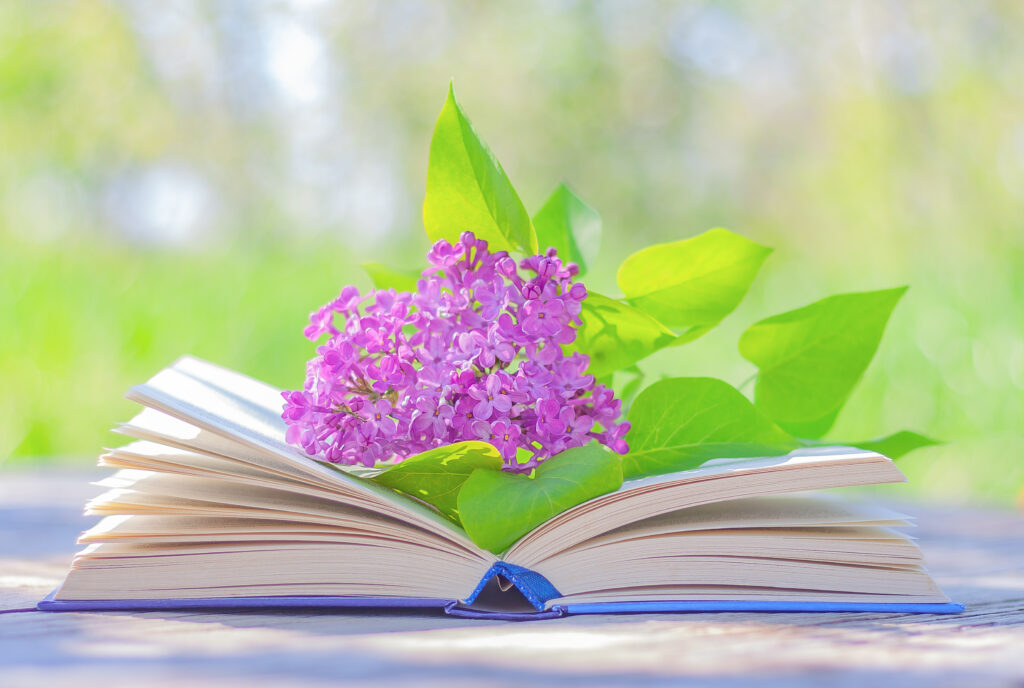
- Companion Planting Guide
- Container Gardening For Beginners
- Growing Citrus in Containers
- Grow A Vertical Vegetable Garden
- 6 Tips For Perfect Plant Pairings
At Jung Seed Co, we strive to be your go-to guide for all your gardening needs. Our YouTube channel The Garden Doctor by Dick Zondag is where he provides gardening tips for all levels of gardeners. When you need reliable gardening advice, turn to the trusted experts at Jung.
View our new catalog online or browse our website for your gardening favorites. To receive info on new products, exclusive deals, and specials, be sure to sign up for our weekly email. Join our Facebook page, to discuss all things gardening!